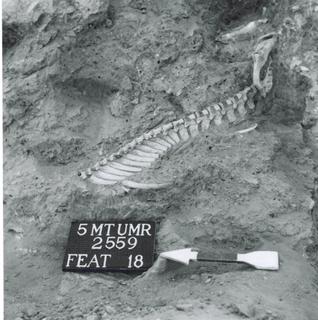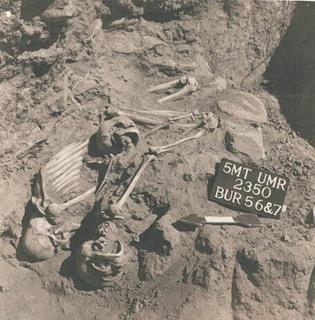That article and subject took me back to an aspect of my master's thesis that I hadn't thought about for years. My thesis at the University of Colorado dealt with the excavation of four Anasazi sites in Mancos Canyon, Colorado within 30 miles or so of the site mentioned in High Country News. We found patterns of animal sacrifice which we assumed were associated with kiva abandonment - as in the case of the snake. To give some context to the descriptions, I will show you a diagram of a "typical" kiva here
 courtesy of the National Park Service. Kivas were subterranean ceremonial chambers that were covered with a roof of cribbed logs. To keep a fire burning and the smoke moving, a ventilator shaft was excavated outside of the kiva walls that connected to an opening near the floor of the kiva.
courtesy of the National Park Service. Kivas were subterranean ceremonial chambers that were covered with a roof of cribbed logs. To keep a fire burning and the smoke moving, a ventilator shaft was excavated outside of the kiva walls that connected to an opening near the floor of the kiva.
Most of the kivas I excavated had dogs and/or turkeys purposely sacrificed and placed on the floor, in the firepit or in the ventilator opening. None of these appeared to be circumstances where the animals could have accidently fallen in and died. The skeletons were all placed on the living surface and were articulated. This picture shows a dog burial from the ventilator opening at a kiva at site 5MTUMR2559.

This kiva also had a dog placed in the firepit with a large slab placed on top of it. One of my colleagues, Bill Gillespie, excavated a site nearby (5MTUMR2347) that had a kiva containing five dogs and eleven turkeys! All of the kivas at these sites dated from the mid AD 900s into the early AD 1000s. The Anasazi were apparently sacrificing the only domesticated animals they had, dogs and turkeys.
But never any wild animals and definitely never any snakes. That is different and interesting.
The HCN article alludes to the issues of warfare and cannibalism among the Anasazi that I discussed in this earlier post. None of my thesis sites had evidence of cannibalism, but one did have a somewhat spooky example of treatment of human dead, as seen in this photograph.

These three bodies were dumped into the ventilator shaft outside of a kiva. A 45-50 year-old male and a 15-17 year-old female were dropped head-first into the shaft and a 5-7 year-old of indeterminable sex was dropped feet-first. All at the same time. Realize that Anasazi burials of this time period were careful affairs with bodies flexed just so and many grave goods. These three people were not so much buried as disposed of. Christine Robinson analyzed these burials as part of her master's thesis and could find no probable cause of death from the skeletal evidence. Were these ritual executions? We'll never know.
I have a couple of friends, Mike and Kathy Gear , who are archaeologists turned novelists. As I mentioned to Steve, this is the sort of thing they could use in one of their "prehistorical" novels. They have set some of their novels in Anasazi prehistory, in fact their latest, People of the Moon, is placed at a Chacoan outlier site, Chimney Rock, located east of Durango, Colorado. Their books are novels, but Mike and Kathy work very hard at researching the time periods and areas they use as settings, so they can represent the current state of archaeological knowledge in their work.
No comments:
Post a Comment